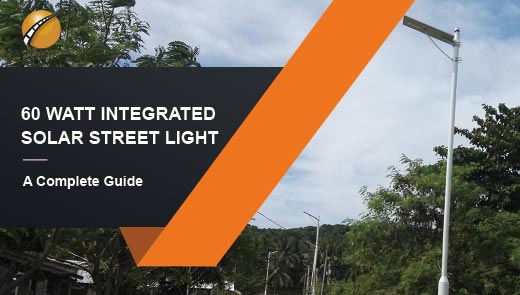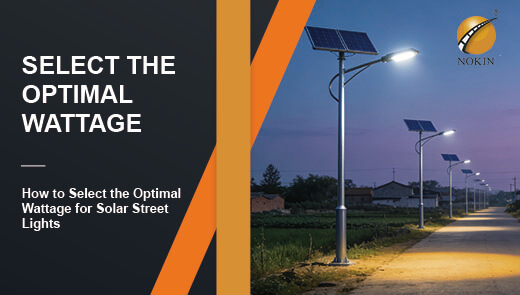Solar Street Lights: A Green Light to Illuminate Diverse Environments
In today's world, where the demand for sustainable energy is growing more urgent than ever, solar street lights—as a key representative of green lighting solutions—are facing unprecedented development opportunities. This article will delve into how solar street lights function in diverse environments, analyze their advantages and challenges, and explore future trends.
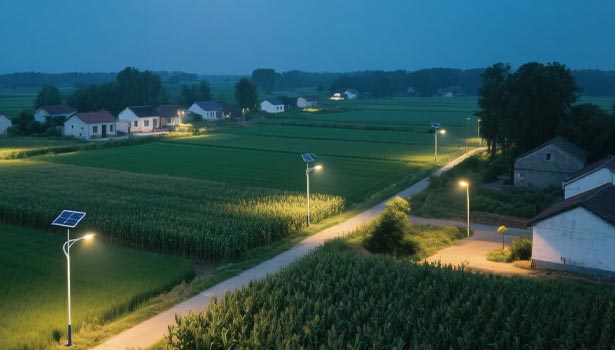
Market Status and Development Opportunities of the Solar LED Street Light Industry
Global Market Overview
According to a report by the International Energy Agency (IEA), the share of solar energy in global new energy installed capacity continues to rise. In Europe, the European Union has set ambitious targets, aiming to increase the proportion of renewable energy in total energy consumption to 32% by 2030. In the United States, California has required all new residential buildings to install solar panels since 2019, a policy that will undoubtedly significantly boost demand for solar street lights and related products.
Policy Support Drives Development
Governments around the world are introducing policies to encourage and support the adoption of solar street lights. Tax incentives and financial subsidies are emerging, effectively reducing the procurement and operational costs of solar street lights and significantly enhancing their market competitiveness. The strong policy support provides a solid foundation for the vigorous development of the solar street light market.
Technological Innovation Shapes the Future
With the continuous advancement of technology, solar street light technology is also undergoing constant innovation. The application of new high-efficiency solar panels, intelligent control systems, and LED energy-saving light sources has made the performance of solar street lights increasingly outstanding. In the future, solar street lights will develop in the direction of intelligence, personalization, and diversification to meet the diverse needs of urban lighting.
Diversified Application Scenarios of Solar Street Lights
Innovation in Urban Intelligent Lighting
In modern cities, solar street lights for urban areas are not only a symbol of green energy but also an important component of smart city infrastructure. Some neighborhoods in New York City have installed solar street lights equipped with intelligent control systems, which can automatically adjust brightness based on light intensity, pedestrian traffic, and vehicle flow. This application significantly reduces unnecessary power consumption, enhances nighttime safety, and contributes to reducing greenhouse gas emissions.
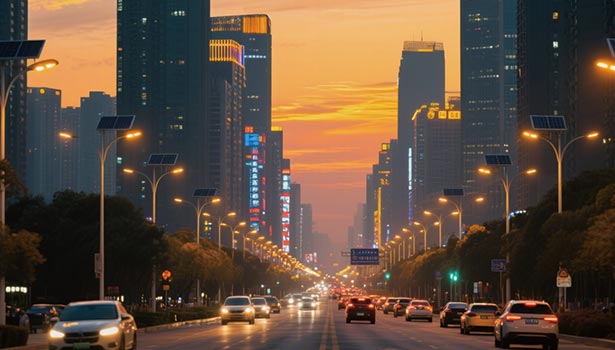
Popularization of Rural Road Lighting
In rural areas with unstable power supply, rural solar street lighting solutions offer a highly cost-effective choose. In many regions of Africa and South Asia, the installation of solar street lights has greatly improved local residents' living conditions. Take Kenyan villages as an example: the introduction of solar street lights has significantly reduced nighttime crime rates while extending local economic activity hours. Additionally, their low maintenance costs effectively alleviate the economic burden on local governments and residents.
Lighting Applications in Special Environments
Solar street lights demonstrate outstanding adaptability in extreme environments. In the Arctic region, solar street lights installed around research stations provide stable lighting for researchers while reducing reliance on fossil fuels. In humid tropical rainforests, advanced waterproof designs and corrosion-resistant materials ensure the long-term stable operation of solar street lights. These cases clearly demonstrate the significant market potential of solar street lights in extreme climatic conditions.
Core Advantages and Technical Challenges of Solar Street Lights
Advantage Analysis
Energy Efficiency: Solar street lights rely on renewable solar energy to operate, converting solar energy into electricity for lighting, significantly reducing dependence on traditional grid power and effectively saving on electricity costs. In the long run, their self-generating nature allows for significant control over operational costs, with a clear advantage in long-term usage costs.
Eco-Friendly: Unlike traditional street lights that rely on fossil fuels, solar street lights do not produce carbon emissions during operation, making them highly environmentally friendly. They are an excellent choice for cities and regions seeking to implement sustainable development concepts and achieve green transformation, contributing to the improvement of the global ecological environment.
Low Operating Costs: After installation, solar street lights require minimal maintenance. Since they do not need to be connected to an external power grid, they avoid long-term electricity expenses. Additionally, their installation process does not require complex trenching or cable laying operations, reducing maintenance costs for wiring and significantly lowering overall maintenance expenses.
Easy Installation: Traditional street lights often require complex wiring projects for installation, whereas solar street lights are relatively simple to install, eliminating the need for large-scale ground excavation and cable laying. Whether in urban roads, communities, or remote rural areas, installation can be completed quickly and conveniently.
Completely Off-Grid: Solar street lights have the ability to operate independently without connecting to the public grid. This feature makes them particularly suitable for use in remote mountainous areas, islands, and other regions far from the grid, as well as areas with unstable power supply and frequent power outages, providing continuous and stable lighting.
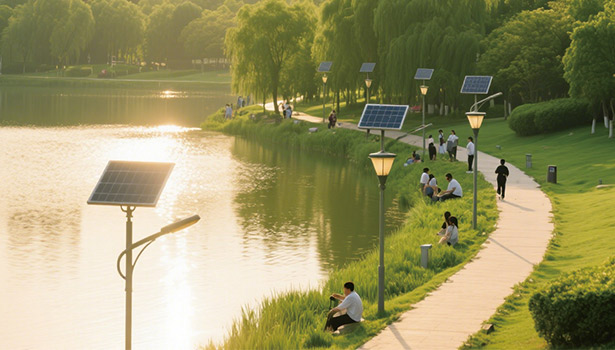
Challenge Response
High initial costs: The initial investment costs for solar street lights are relatively higher than those for traditional street lights, primarily due to the higher procurement costs of components such as solar panels, energy storage batteries, and LED lighting fixtures, which increase overall construction costs. However, over the long term, these initial investments can be offset by savings in electricity costs and lower maintenance expenses during use.
Weather-dependent: Solar street lights rely on sunlight for operation. In cloudy, rainy weather, or during winter when daylight hours are short and sunlight intensity is weak, the power generation efficiency of solar panels decreases, affecting the street lights' runtime and brightness. Currently, this can be mitigated by optimizing the energy storage system or adding auxiliary power supply equipment to reduce the adverse effects of weather conditions.
Battery maintenance: The energy storage batteries used in street lights have a limited lifespan and typically need to be replaced every few years. Under extreme weather conditions such as high temperatures or severe cold, battery performance and lifespan may be further affected, leading to increased maintenance difficulties and costs. Continuous research and development of long-life batteries and optimization of maintenance plans are necessary.
Theft Risk: The solar panels and energy storage batteries of solar street lights have significant value. In areas with poor public security management and inadequate protective measures, they are prone to theft or intentional damage. To address this issue, components with tamper-proof designs can be adopted, and security measures in the installation areas can be strengthened to reduce the risk of theft and damage.
Future Development Trends of Solar Street Lights
Intelligent Control and IoT Integration
In the future, the seamless integration of solar street lights with smart city infrastructure will become a key direction for industry development. Through IoT technology, street lights can collect real-time data on light intensity, ambient temperature, and electricity usage, and transmit this data to a management platform. Managers can use remote management functions to flexibly adjust street light brightness and switching times, and even precisely locate faulty street lights for quick repair.
Additionally, street lights can be integrated with traffic signals, security cameras, and other urban facilities to build an intelligent urban lighting ecosystem, enhancing energy efficiency while providing residents with more convenient and intelligent living experiences.
More Efficient Energy Storage Systems
Continuous breakthroughs in lithium and solid-state battery technology will bring revolutionary changes to the energy storage systems of solar street lights. Compared to traditional batteries, lithium batteries have higher energy density, while solid-state batteries offer greater safety and longer cycle life. When applied to solar street lights, these new batteries can store more energy in a limited space, ensuring stable operation even under extreme weather conditions with prolonged insufficient sunlight. Additionally, advanced battery management systems can monitor battery status in real-time, optimize charging and discharging processes, further enhance energy storage efficiency and battery lifespan, and reduce maintenance costs.
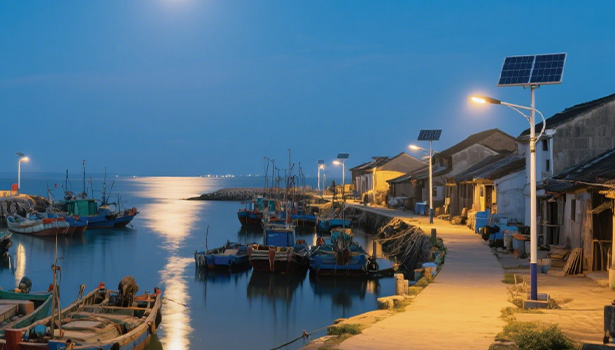
Application of New Materials
Solar street lights new materials application will significantly enhance the performance and applicability. Lightweight and efficient solar panels made from new semiconductor materials can improve photovoltaic conversion efficiency while being thinner and lighter, enabling street lights to generate more electricity under the same lighting conditions. Meanwhile, durable waterproof materials such as nano-coatings and composite polymers can effectively prevent rainwater and moisture from corroding the internal circuits and components of street lights.
In harsh environments such as coastal areas with high salt fog or rainforests with high humidity, these new materials can significantly enhance the corrosion resistance and aging resistance of street lights, extend their service life, reduce replacement frequency, and provide a strong guarantee for the stable operation of solar street lights in complex environments.
Expansion of Application Scenarios
As global infrastructure development continues to advance, the application scenarios for solar street lights will continue to expand. In emerging markets such as Southeast Asia and Africa, where urbanization is accelerating, there is a strong demand for green, low-cost lighting solutions, making solar street lights the primary choice for road and community lighting. In special scenarios, from scenic trails and golf courses to industrial areas such as mines and oil fields, solar street lights can meet lighting needs thanks to their advantages of no wiring and independent power supply. Additionally, in temporary locations such as disaster relief camps and field research stations, solar street lights will play a crucial role, further promoting the global adoption of green lighting solutions and contributing to achieving carbon neutrality goals.
Solar street lights, with their numerous advantages, have demonstrated significant application potential in urban, rural, and special environments. Despite facing some technical challenges, with ongoing technological innovation and continued policy support, the future development prospects for solar street lights are extremely promising. We urge governments, businesses, and individuals to jointly focus on and support the development of solar street lights, working together to promote the global adoption of green lighting solutions and illuminate the world with sustainable green light.

